The Tailor-Made Top Places to See in Rishikesh
- Barry Pickard

- Jul 11
- 13 min read
Updated: Jul 17
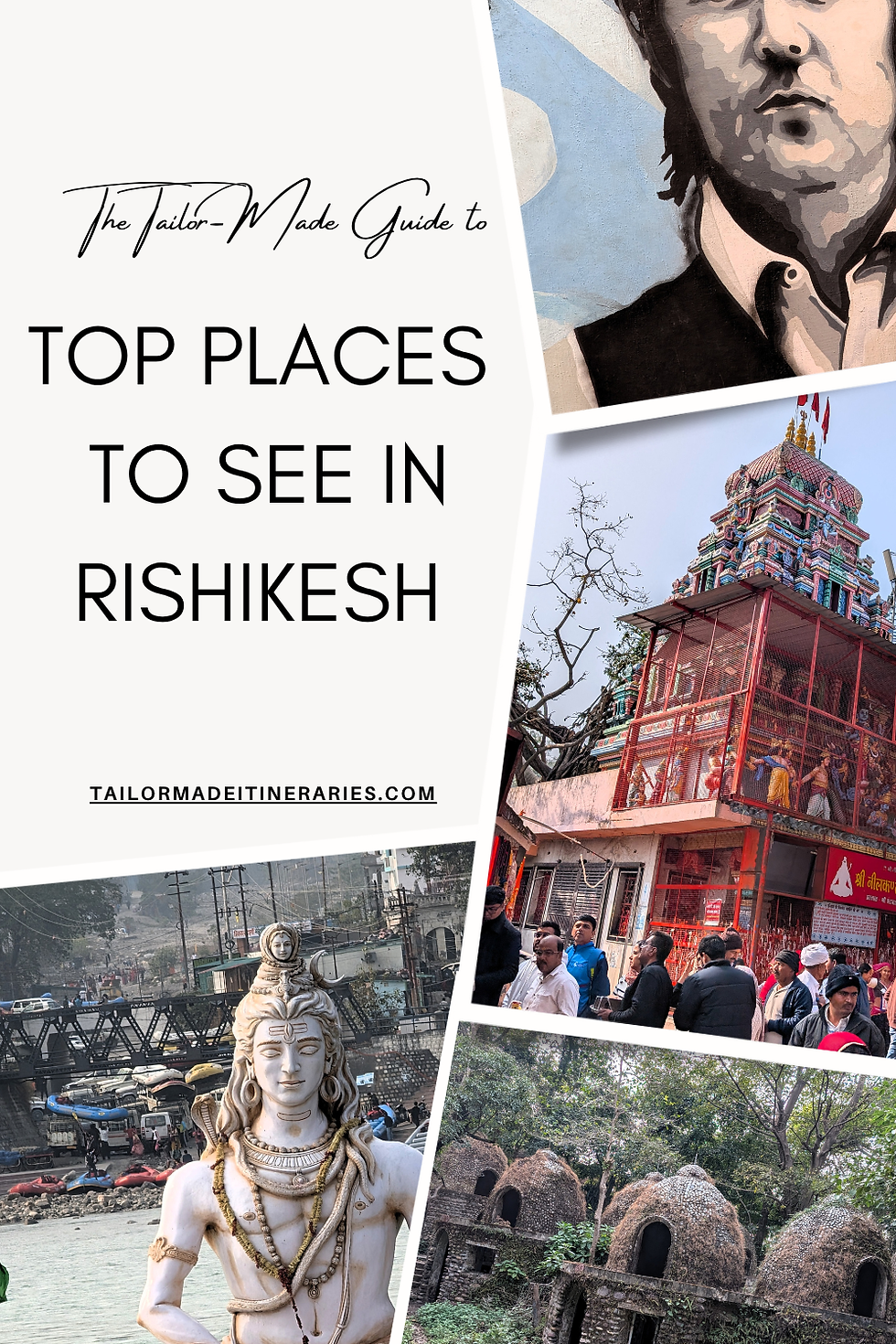
Disclosure: This post contains affiliate links. Regardless of this, please be advised that all opinions expressed in this blog post are genuine and authentically my own.
Author: Barry Pickard
Hi, I'm Barry, the owner of Tailor-Made Itineraries and I have been designing bespoke self-guided tours for adventurous and curious travellers since 2015. I am a history graduate with a passion for travel.
I created this blog to show, through my own adventures, how you can have an incredible travel experience as an independent traveller, giving you the information to navigate the world with confidence.
Contents
Picture this: You're standing on the banks of the sacred Ganges as the evening air fills with the haunting sound of temple bells echoing off ancient stone walls, while the scent of burning ghee and marigold garlands drifts from nearby ashrams. Orange-robed sadhus pad silently past colourful street murals that blend Hindu deities with Beatles lyrics, and somewhere in the distance, the splash of white-water rafters mingles with chanted mantras. This isn't just any destination—this is Rishikesh, where spiritual seekers and adventure junkies somehow coexist in perfect harmony.

But here's the thing: with so many incredible experiences packed into this riverside town, where should you actually go first in Rishikesh to make the most of your time?

After exploring every corner of this fascinating place—from the graffiti-covered ruins of the Beatles Ashram to the adrenaline-pumping bungee jumps, from dawn meditation sessions to late-night chai conversations with fellow travellers—I've cracked the code on how to experience the best places to visit in Rishikesh without missing the hidden gems that most tourists walk right past.
Whether you're an independent traveller seeking authentic spiritual experiences, a Beatles fan on a pilgrimage, or an adventure enthusiast looking for your next adrenaline fix, this guide will show you exactly how to navigate Rishikesh like a seasoned traveller. I'll share the insider tips that'll save you time, the local secrets that'll enrich your experience, and the practical advice that'll keep you from making the same mistakes I did.
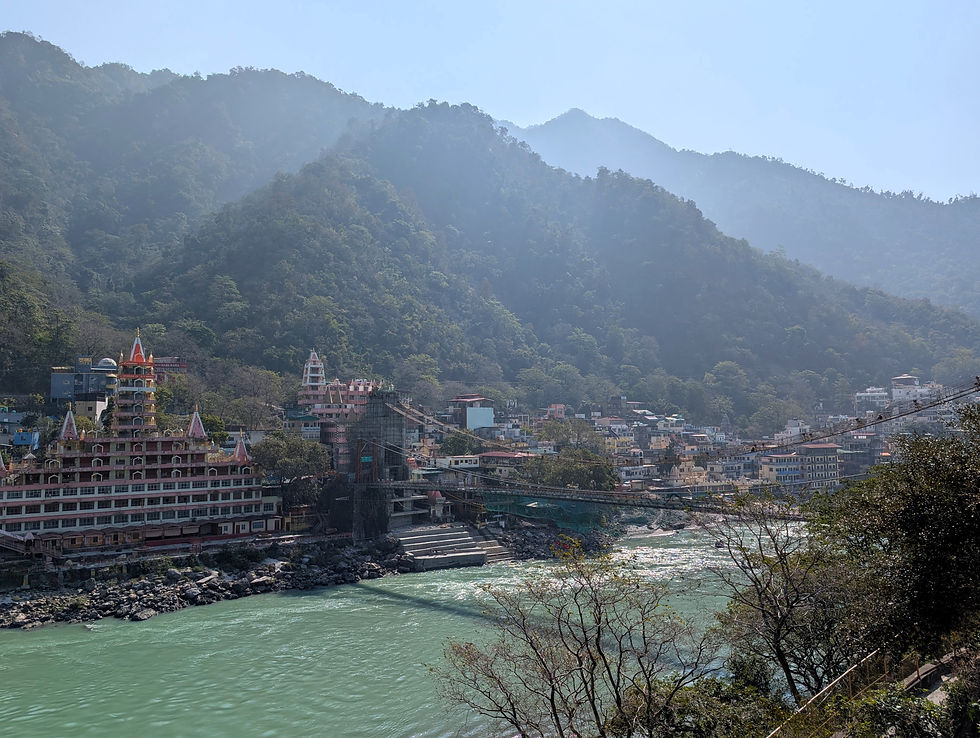
Ready to discover why Rishikesh captivates everyone from backpackers to celebrities? Let's dive into the places that'll make your trip unforgettable.
Don’t forget that Tailor-Made Itineraries delights in creating bespoke self-guided tours. So, if visiting any of these top places to see in Rishikesh appeals to you, reach out to me by email. I would be more than happy to design a self-guided tour around your requirements incorporating the best tourist places in Rishikesh, or indeed, a general tour of India itself.
Top Places to See in Rishikesh
The Beatles Ashram in Rishikesh
Nestled on the eastern bank of the Ganges River in Rishikesh, Uttarakhand, India, the Beatles Ashram, also known as Chaurasi Kutia, is a place where history, spirituality, and art converge. This iconic site, originally established as the International Academy of Meditation by Maharishi Mahesh Yogi in the early 1960s, has a rich and fascinating history.

Maharishi Mahesh Yogi, born Mahesh Prasad Varma around 1917 in Jabalpur, India, was a prominent Hindu spiritual leader. With a degree in physics from Allahabad University, he later became a disciple of Swami Brahmananda Saraswati, the Shankaracharya of Jyotir Math in the Indian Himalayas. Maharishi is best known for developing the Transcendental Meditation (TM) technique, which he began teaching globally in 1958. His teachings emphasized achieving a higher state of consciousness through regular meditation, and he trained over 40,000 TM teachers and taught the technique to millions worldwide. Maharishi's influence extended beyond spirituality; he founded numerous educational institutions and charitable organizations, and his movement attracted celebrities like The Beatles, the Beach Boys, and Mia Farrow.
The ashram gained international fame when The Beatles visited it in February 1968 to study meditation under Maharishi Mahesh Yogi. During their stay, they composed numerous songs, many of which appeared on their "White Album." The visit was a significant period for the band, marking one of their most productive songwriting phases.

After being abandoned in the 1990s, the site reverted to the local forestry department in 2003. It was officially opened to the public in December 2015 and has since become a popular destination for Beatles fans and spiritual seekers. The vibrant art installations at the Beatles Ashram in Rishikesh are a relatively recent development. Artists from around the world took it upon themselves to transform the decaying structures into an open-air gallery. These installations were not officially sanctioned initially; instead, artists saw an opportunity to celebrate The Beatles' legacy and the ashram's spiritual history through their creative expressions.
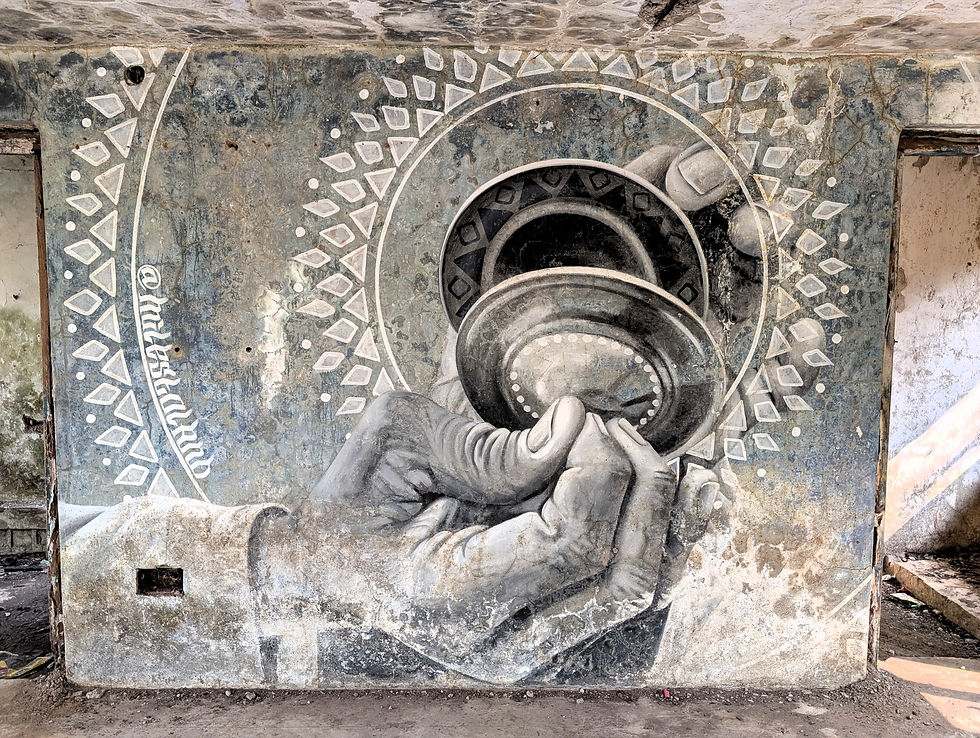
Today, the Beatles Ashram stands as a testament to the enduring legacy of The Beatles in Rishikesh and the timeless teachings of Maharishi Mahesh Yogi. Despite some areas being overrun by jungle, it remains a place of historical and cultural significance and still the tops the list of tourist places in Rishikesh. I loved exploring the vibrant graffiti, art installations, and the historical buildings, and it is definitely a must-visit destination for both Beatles fans and spiritual seekers alike.
Tailor-Made Top Tips:
Don’t be put off by the signage at the entrance. It is not obvious that this is The Beatles Ashram, instead, it welcomes you to “Chaurasi Kutiya, Rajaji Tiger Reserve.” Don’t worry, there are no tigers here, instead, it is the tiger reserve organisation that also manages this site. A little confusing!

If you are a foreign visitor, you are required to show your passport when buying tickets at the entrance kiosk. I find it easier to keep a photo of my passport identification page (with your photo portrait on it), and this was accepted instead of the real copy.
The ashram is spread over a large site. If, like me, you want to check out all the buildings and admire the artworks, then expect to take a couple of hours at the site. If you are happy with just a cursory look at the buildings, it will still take around half an hour to walk round.

There is a small café on site in the main building that will be in front of you once you walk up the path from the entrance gate. I had a drink of chai there, but there were only limited options for food.

Themed cafes – Beatles Cafe & The 60’s Café
To continue your counter-culture adventures try one of the themed cafes. Both the Beatles Café and The 60’s Café are great options for lunch, dinner or just hanging out at, and are definitely some of the best cafes in Rishikesh.
The Beatles Café Risihikesh gives stunning views of the Ganges River, with a décor focussed on photos and memorabilia of The Beatles, with a liberal smattering of some other 60’s bands. The menu is varied and, as with most restaurants in Rishikesh, there is a wide selection of vegan dishes.
Meanwhile, The 60’s Café Rishikesh also has walls adorned with photos of The Beatles and other legendary musicians from that era. The soundtrack is predominantly rock and roll, enhancing the nostalgic vibe. The menu including Indian, Italian, Mediterranean, Asian, and contemporary dishes, catering to various dietary preferences with vegan, gluten-free, and raw food options available. The cafe has an open-air garden, a patisserie, a low seating lounge, and indoor dining areas.
Ashrams – Parmarth Niketan Ashram
Rishikesh is renowned as the "Yoga Capital of the World," and the town is dotted with numerous ashrams, each offering a unique blend of yoga, meditation, and spiritual teachings. The ashrams in Rishikesh serve as sanctuaries for those looking to escape the hustle and bustle of everyday life and delve into self-discovery and inner peace. From the serene banks of the Ganges to the tranquil gardens within these spiritual retreats, you can participate in daily yoga sessions, meditation classes, and satsangs (spiritual discourses). These activities are by far the most popular things to do in Rishikesh.

Parmarth Niketan Ashram stands out as one of the largest and most revered ashrams in Rishikesh. Founded in 1942, it offers a serene environment on the banks of the Ganges River, surrounded by lush greenery and majestic mountains. The ashram is famous for its daily Ganga Aarti, a mesmerizing evening ritual that draws hundreds of devotees and tourists alike. With over 1,000 rooms, Parmarth Niketan provides modern amenities while maintaining a spiritual simplicity. Now, to be clear, I didn’t participate in any of the ceremonies or classes, but just walking around the campus, you could feel and enjoy the peaceful vibes permeating the environment.
If you are enjoying this post, remember and subscribe to my mailing list to receive my latest blog posts.
Bridges – Janki Setu, Ram Jhula & Lakshman Jhula
Rishikesh is home to three iconic bridges that span the sacred Ganges River: Janaki Setu, Ram Jhula, and Lakshman Jhula. Each bridge offers a unique charm and significance. Janaki Setu, inaugurated in 2020, is a modern pedestrian bridge with separate lanes for pedestrians and bicycles, providing a convenient and scenic crossing.


Ram Jhula, built in the 1980s, connects Swarg Ashram to Sivananda Ashram and the approaches on each riverbank are lined with shops selling spiritual books and local snacks.
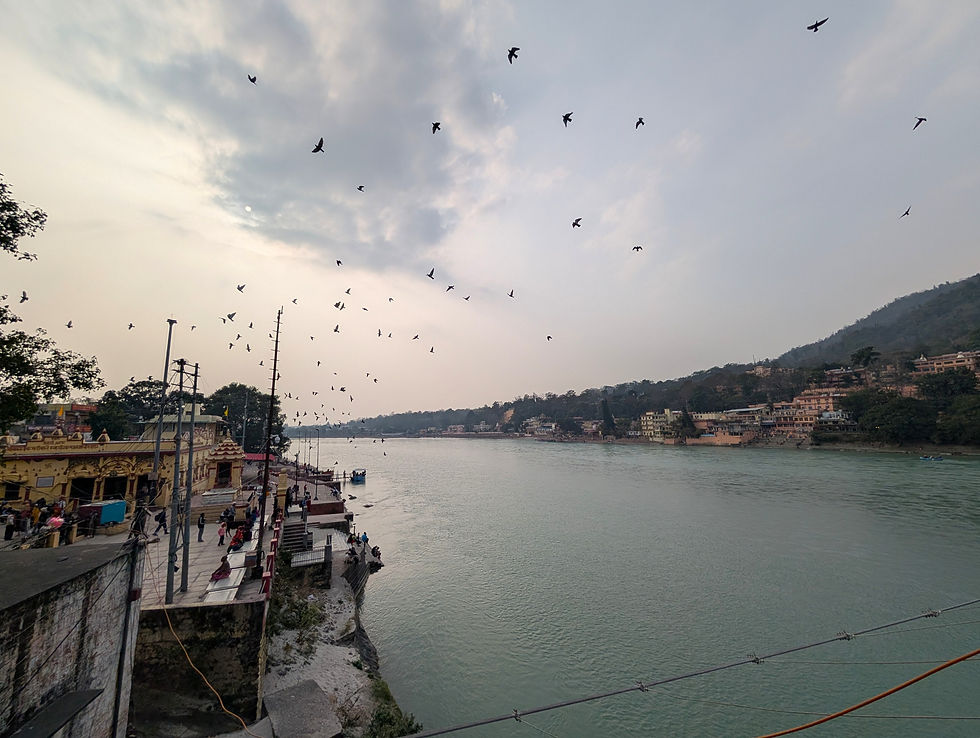
Lakshman Jhula, a historic suspension bridge, is believed to be the site where Lakshman, brother of Lord Rama, crossed the river on a jute rope. This bridge offers stunning views of the Ganges and is flanked by temples and bustling markets. However, due to safety concerns, Lakshman Jhula has been closed since 2019, and construction of a new glass bridge, Bajrang Setu, is underway to replace it. The new bridge is expected to be completed by June 2025, promising a thrilling experience with its glass floor and majestic design.

Street Art
Rishikesh is home to a vibrant street art scene beyond the Beatles Ashram. The town's walls and alleys are often adorned with colourful murals and graffiti that reflect its spiritual and cultural ethos. Unfortunately, I couldn’t find out much about who the artists were and why they were do it, but I guess this just adds a further layer of mystery to this special place.

It seems that the prevalence of street art in Rishikesh can be attributed to its unique blend of spirituality and contemporary expression. The murals often celebrate themes of inner peace, mindfulness, and connection with nature. Additionally, Rishikesh's global appeal attracts artists from various cultures, contributing to the diverse artistic landscape.
Tailor-Made Top Tip:
The area around the east shore of the Janki Setu, and on the bridge itself was teeming with interesting street art, as was the Tapovan area, which was on the west shore of the Lakshman Jhula bridge.
Shree Neelkanth Mahadev Temple
The Shree Neelkanth Mahadev Temple, located in the hills above Rishikesh, is a revered Hindu temple dedicated to Lord Shiva. The temple is famous for its association with the legend of Samudra Manthan (the churning of the ocean). According to Hindu scriptures, during the churning of the ocean by the Devas (gods) and Asuras (demons) to obtain Amrita (the elixir of immortality), a deadly poison called Halahala emerged. To save the universe from destruction, Lord Shiva consumed this poison, which turned his throat blue, earning him the name Neelkanth (The Blue-Throated One). The temple is believed to be the exact spot where this divine event occurred. Whether you are a devout follower or a curious traveller, this temple promises an experience that will stay with you forever.

Tailor-Made Top Tips:
Of the many attractions near Rishikesh, the temple looks close to the town when you look at it on the map. But looks are deceiving, since there isn’t a direct road to it from Rishikesh. This means it takes around an hour to drive to the temple around the winding hill roads. There is a more direct route that you can take by foot, but, depending on where you are setting off in Rishikesh, it will probably take at least 3 hours to get to the temple.
If you are a foreign traveller like me, you will probably find it difficult to work out exactly where you should be going and what you should be doing, so if there are any guides available at the temple, I’d encourage you to hire one.
Trayambakeshwar Temple
The most prominent temple in Rishikesh is undoubtedly the Trayambakeshwar Temple, also known as the Tera Manzil Temple. This temple is dedicated to Lord Shiva and is one of the most significant spiritual landmarks in the region. The temple's name, "Trayambakeshwar," refers to the three-eyed form of Lord Shiva, symbolizing inner vision and wisdom. The temple is a 13-story structure, each floor housing different deities.

If you are enjoying this post, remember and subscribe to my mailing list to receive my latest blog posts.
Adventure Activities in Rishikesh
Rishikesh is renowned for its adventure sports, attracting thrill-seekers from around the world. It is perhaps most famous for its white water rafting on the Ganges River. The rapids range from Grade I to Grade IV, making it suitable for both beginners and experienced rafters. Popular stretches include Shivpuri to Rishikesh (a 16 km stretch with moderate rapids) and Marine Drive to Rishikesh (a 26 km stretch with more challenging rapids).
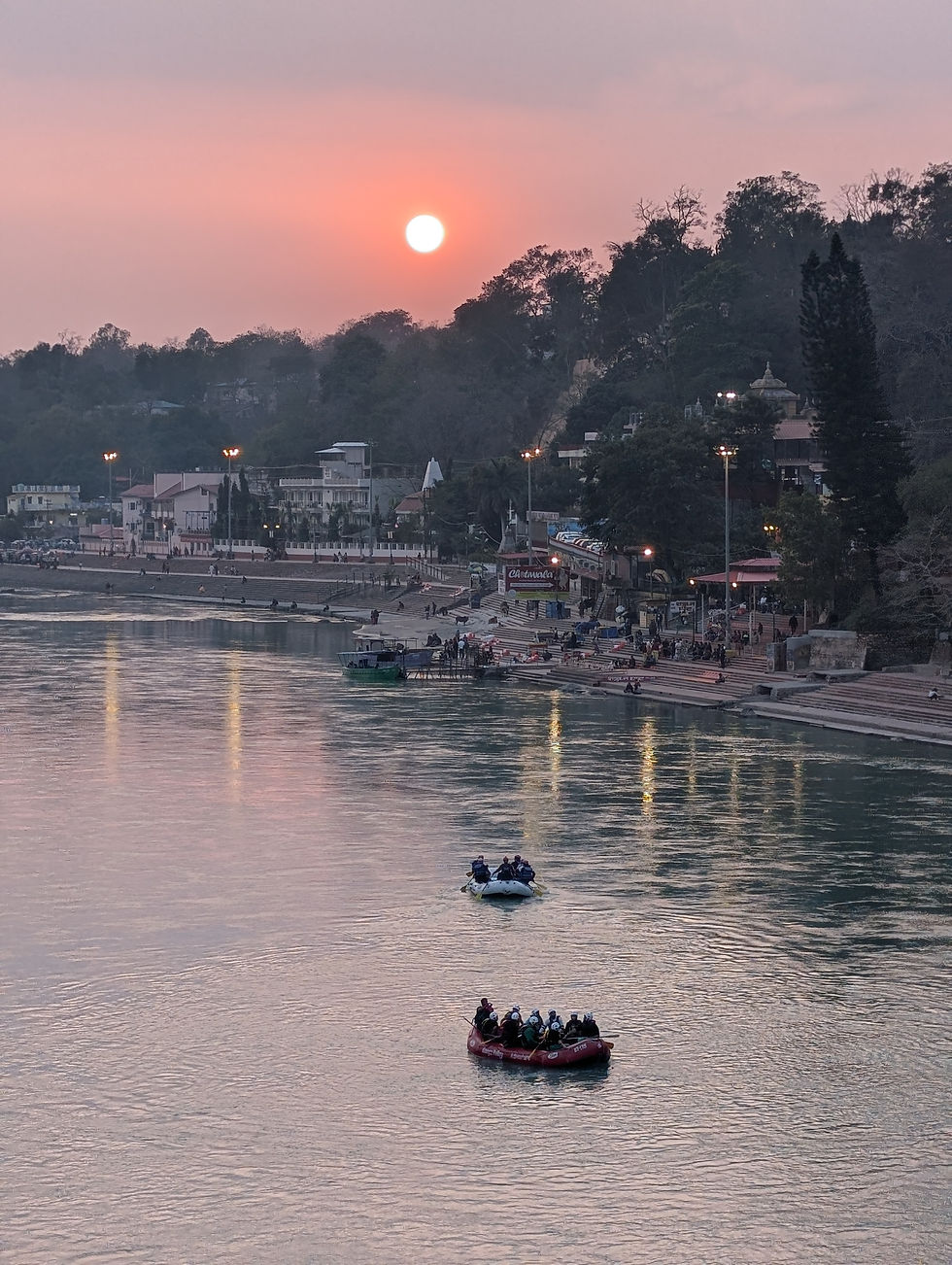
You can also experience the ultimate adrenaline rush with bungee jumping at Jumpin Heights, India's first fixed-platform bungee. The jump is from a height of 83 meters, making it one of the highest in India. Or perhaps try the reverse bungee, also at Jumpin Heights, where the giant swing involves being harnessed to a giant pendulum and then released into a thrilling free fall. There are also opportunities near Rishikesh to glide over the Ganges on a zip line, kayak, rock climb and rappelling.
However, as much as I want to bring you first hand experiences, I was more than happy to keep my feet on the ground and explore the urban landscape of Rishikesh!
How to Get to Rishikesh
By Air: The nearest airport to Rishikesh is Jolly Grant Airport in Dehradun, which is about 21 kilometres away. From the airport, you can take a taxi or cab to Rishikesh, which takes around 40-45 minutes. As for international airports, the nearest one is the Indira Gandhi International Airport, Delhi.
By Train: The closest major railway station is Haridwar Railway Station, approximately 25 kilometres from Rishikesh. From Haridwar, you can take a taxi, local bus, or shared auto-rickshaw to reach Rishikesh in about 45 minutes. There is also a smaller Rishikesh Railway Station, but it mainly serves local trains.
By Road: Rishikesh is well-connected by road via National Highway 34. You can drive from nearby cities like Delhi, Haridwar, and Dehradun. The drive from Delhi to Rishikesh takes about 5-6 hours. There are also regular bus services, including government and private buses, from cities like Delhi, Dehradun, and Haridwar.
Best Hotels in Rishikesh
There is a diverse range of accommodation in Rishikesh, with options to suit every budget and travel style. Rishikesh offers several options of accommodation: ashrams, guest houses, and hotels. For the authentic spiritual experience, you can stay in traditional ashrams like Parmarth Niketan. These ashram stays often include simple vegetarian meals and access to yoga classes and meditation sessions.
For budget-conscious independent travellers, there are numerous guesthouses, dharamshalas, and hostels scattered around key areas like Ram Jhula, Swarg Ashram, and Tapovan (such as Madpackers, Shalom Backpackers, or Back Stayz Hostel). Traditionally, accommodation in Rishikesh was mainly budget hotels and guesthouses (I stayed at the Terrakotta, which I can highly recommend) but in recent years more upmarket options have opened along the river (such as Yog Niketan By Sanskriti or Lemon Tree Premier).
Quick Questions Answered
What's the best time to visit Rishikesh? If you're looking for a balance of adventure and comfort, February to April is often considered the sweet spot. Winter (October to February) is busy, with pleasant days and chilly nights, whereas Spring (March to April) is mild and comfortable, but with fewer crowds than winter. Meanwhile Summer (May to June) is hot and humid, and Monsoon season (July to September) unsurprisingly rainy.
How can I make the most of my limited time? If you’ve only got a day or two in Rishikesh, making the most of your time means hitting a mix of spiritual landmarks and immersive experiences. Start early with the serene Ganga Aarti at Triveni Ghat or an invigorating yoga session overlooking the river. Spend your day walking the iconic suspension bridges—Lakshman Jhula and Ram Jhula—exploring nearby temples and local cafés. Midday, visit the Beatles Ashram to soak in creativity and nature. Time your evening around sunset by the Ganga—there’s nothing like ending your day with the river glowing gold and a sense of calm washing over you.
What food is famous in Rishikesh? Try some of the Garhwali cuisne, with dishes like Kafuli (spinach curry) and Phaanu (lentil stew), which reflects that Himalayan roots of the region.
What time is Ganga Aarti in Rishikesh? This typically takes place twice a day—once in the early morning and again in the evening, with timings that shift slightly by season. Morning tends to be around 05:45 to 06:45, and during summer, evening Aarti is around 18:30 to 19:30, and around 17:30 to 18:30 in the winter. The most popular spot to witness it is Triveni Ghat, where the riverfront comes alive with chants, lamps, and a deeply spiritual atmosphere. It’s best to arrive 30–45 minutes early to get a good spot, especially during weekends or festivals.
What to bring back from Rishikesh? There are plenty of spritiual and wellness finds, like rudraksha beads, essential oils and Ayurvedic products. There is also a treasure trove of yoga wear, hand-printed shawls and eco-friendly goods to be found.
Which is better, Rishikesh or Haridwar? Having visited both of these spiritual havens, which are just a half hour drive apart, I'd have to say that it depends on what kind of experience you are after. Rishikesh is more for the soulful adventurer, perfect for enjoying a laidback vibe or, alternatively, a more active sport. Haridwar, however, is more for the devout Hindu pilgrim, being famous for the Ganga Aarti at Har Ki Pauri, temples like Mansa Devi and Chandi Devi, and the grand Kumbh Mela. I thoroughly enjoyed both, but my preference would be to go back to Rishikesh.

The Ganges, Rishikesh
Conclusion
Rishikesh isn't just a destination—it's a transformative experience that'll challenge your expectations and leave you planning your return visit before you've even left. Whether you're seeking spiritual awakening at ancient ashrams, adrenaline-pumping adventures on the Ganges rapids, or simply want to soak up the unique atmosphere where counter-culture history meets timeless spirituality, Rishikesh delivers in ways that no other place can. The key is knowing where to go and what to expect—and now you've got the insider knowledge to make the most of every single moment. Trust me, this town has a way of getting under your skin, and once you've experienced the magic of Rishikesh, nowhere else will quite compare.
Related Blog Posts
If you would like more information on India and how to visit this fascinating country, please view the Tailor-Made Itineraries posts below:
What's your dream Rishikesh experience—spiritual retreat, Beatles pilgrimage, or adventure sports? Please comment below and let me know.
Don’t forget that Tailor-Made Itineraries delights in creating bespoke self-guided tours. So, if visiting any of these top places to see in Rishikesh appeals to you, reach out to me by email. I would be more than happy to design a self-guided tour around your requirements incorporating the best tourist places in Rishikesh, or indeed, a general tour of India itself.
Tailor-Made Itineraries posts every two weeks, and you can subscribe to the latest blog and newsletter here. Until then, happy reading and safe travels.
Barry
Contact Me: tailoritineraries@gmail.com
Tailor-Made Itineraries creates one-of-a-kind bespoke self-guided travel itineraries for adventurous and curious travellers.
These self-guided tours deliver a personalised and exciting holiday experience that takes the effort out of trip planning.
Rishikesh Map
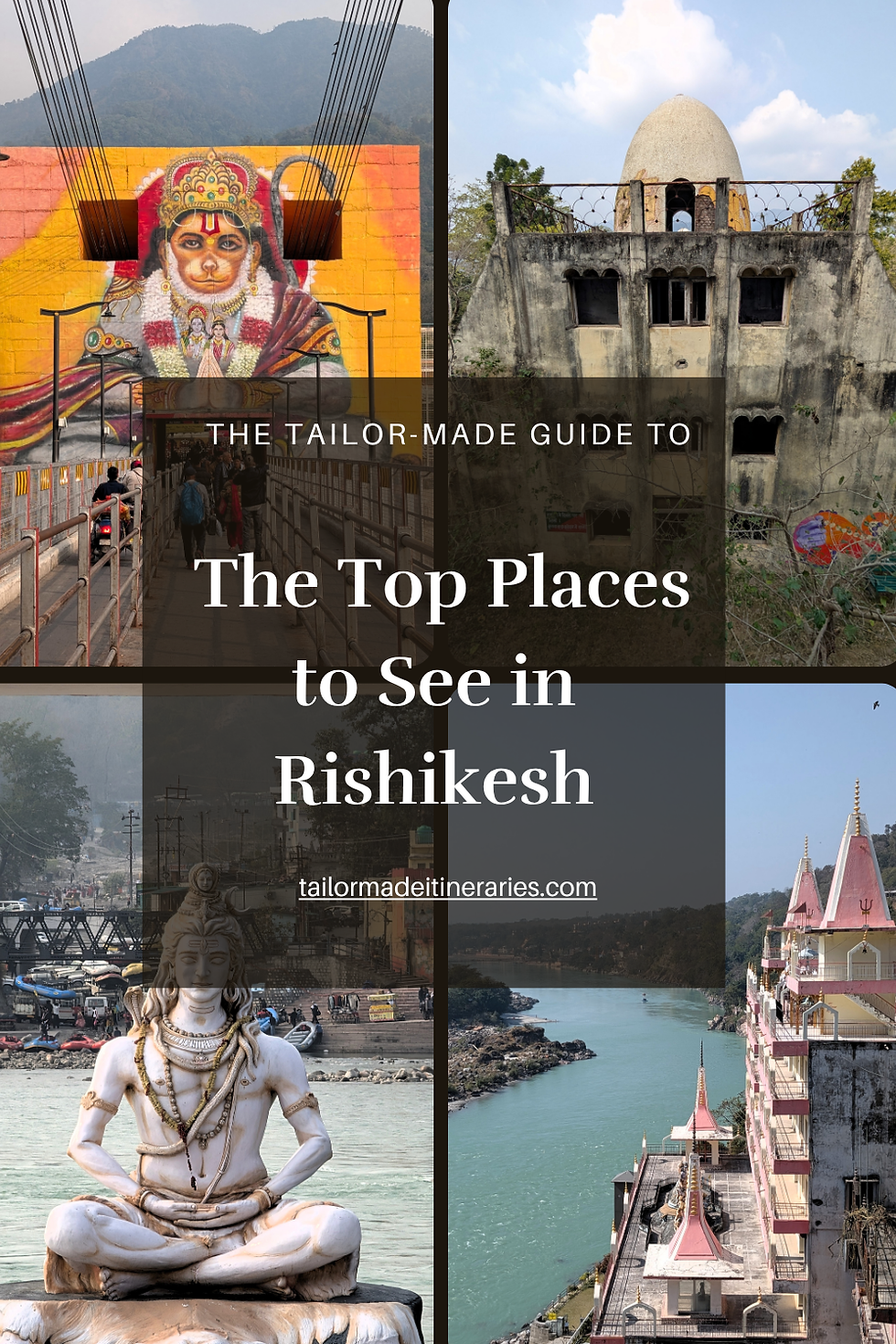



































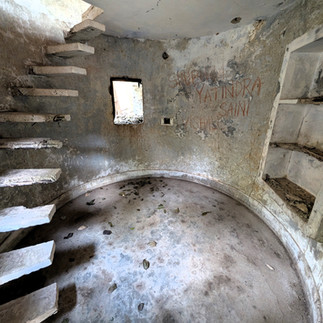

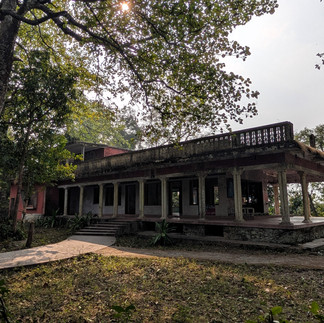









































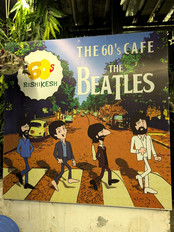









































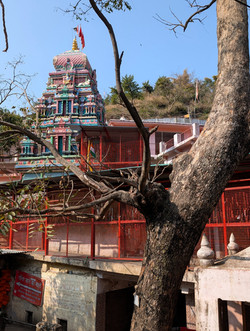









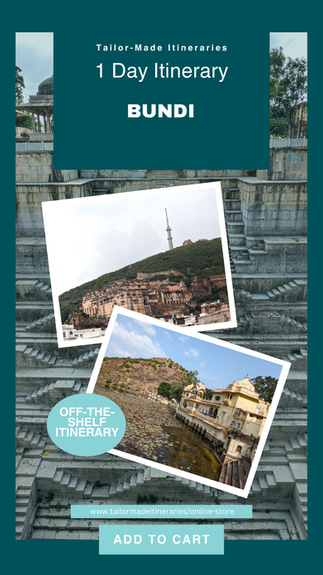







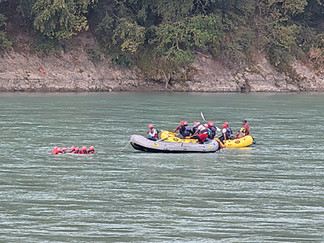









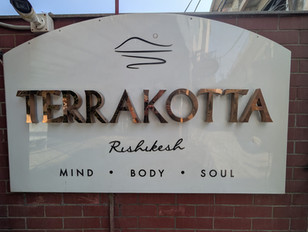























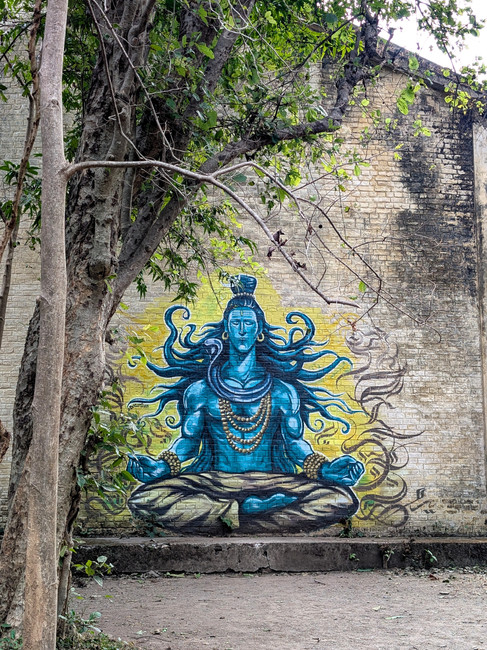









Comments